Over the three days on June 20, 21, and 22, Mountain Watershed Association and the Western Pennsylvania Conservancy conducted a survey of the Youghiogheny Watershed for the elusive Eastern Hellbender. We were also supported by Jacobs Creek Watershed Association, Ohiopyle State Park, and West Virginia Water Research Institute, a part of Three River Quest.
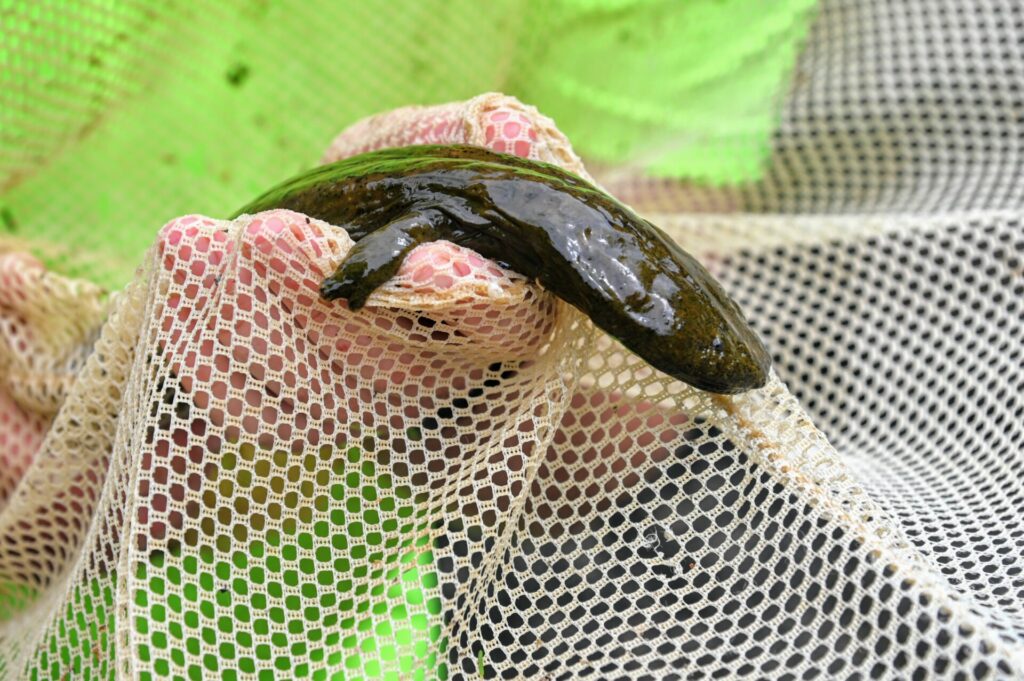
The Eastern Hellbender (a.k.a. Allegheny Alligator, Snot Otter, or Cryptobranchus alleganiensis alleganiensis), is the largest salamander in North America and the third-largest in the world. It’s also the Pennsylvania state amphibian!
Hellbenders, like all amphibians, are very sensitive to environmental change and habitat alteration. These big salamanders are an indicator species, which means that their presence in a waterway indicates good water quality — hellbenders require cool, clean water and a stable food chain that provides them with lots of crayfish and other aquatic prey.
These critters are notoriously hard to spot, since they live under big, flat rocks in the river and typically only come out at night to hunt. Scientists often conduct snorkel surveys or carefully move rocks that hellbenders might live under to look for them.
In the past, the WPC research team had used SCUBA gear to dive under the water of the Yough and look for hellbenders. But using diving gear in deep, moving whitewater was a challenge, so they decided on a traditional flip-and-turn survey instead.
Day 1 – Casselman River and Laurel Hill Creek
On June 20, the team surveyed Laurel Hill Creek and the Casselman River near Confluence. They didn’t locate any salamanders, but did find a stonecat catfish and a madtom.
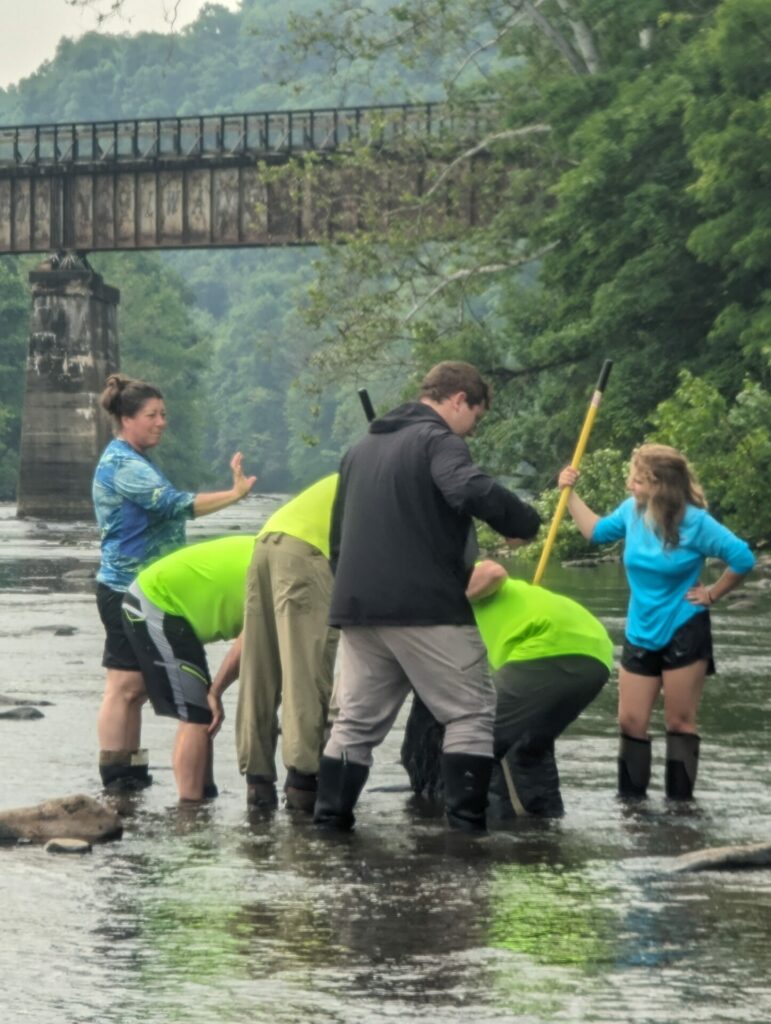
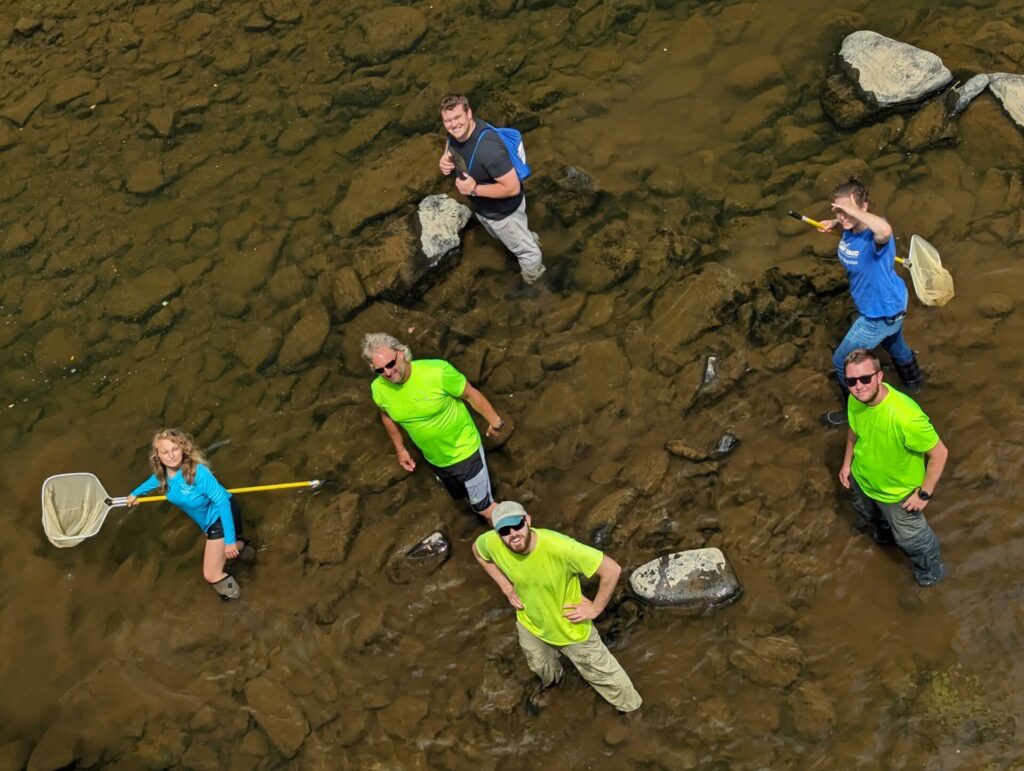
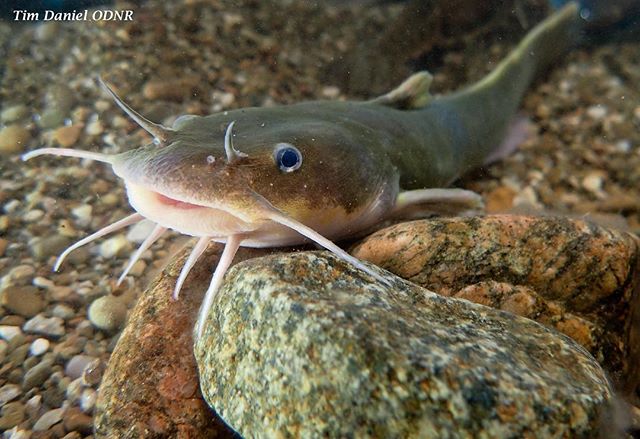
Madtoms belong to the genus Noturus. They are not as likely to be seen as often as other catfishes because of their miniature size, their secretive nature, and their rarity or scattered distribution. Two madtoms are endangered species in Pennsylvania and are found only in French Creek, in the northwest corner of the state: The mountain madtom, which grows to just two or three inches, and the northern madtom, which grows to about four inches. The northern madtom is also endangered, and the brindled madtom is a threatened species.
The stonecat (Noturus flavus), one of the largest members of the madtom group, can grow to nearly a foot, but they are usually 4-8 inches long. The stonecat is named for its habit of hiding under stones and rocks on the bottom of the stream during the day.
Stonecats live in clean streams and rivers with an abundance of boulders, stones and gravel in northern and western Pennsylvania. They occupy fast-moving riffle areas and are opportunistic predators, eating everything smaller than themselves.
Day 2 – Ohiopyle State Park
The next day, the team traveled to Ohiopyle State Park to search for hellbenders in the Lower Yough. They based their survey locations on anecdotal evidence of hellbenders in the river, choosing places where locals paddlers, hikers and fishermen have seen hellbenders in the past.
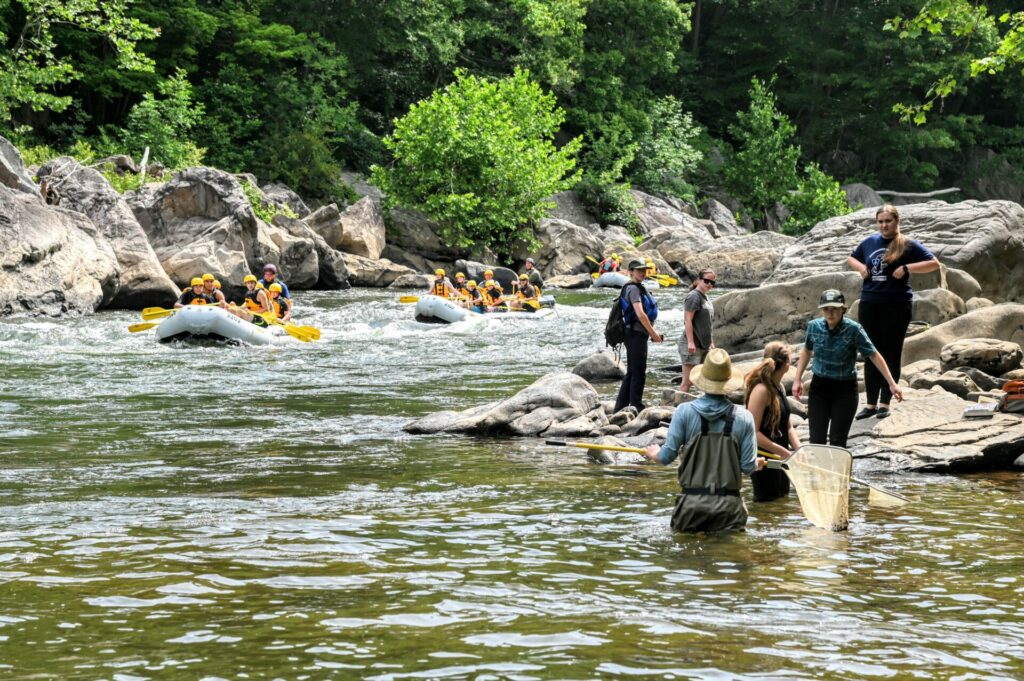
In the morning, the group met with employees of Ohiopyle State Park and Jacobs Creek Watershed Association to access the Yough via the Great Allegheny Passage Trail.
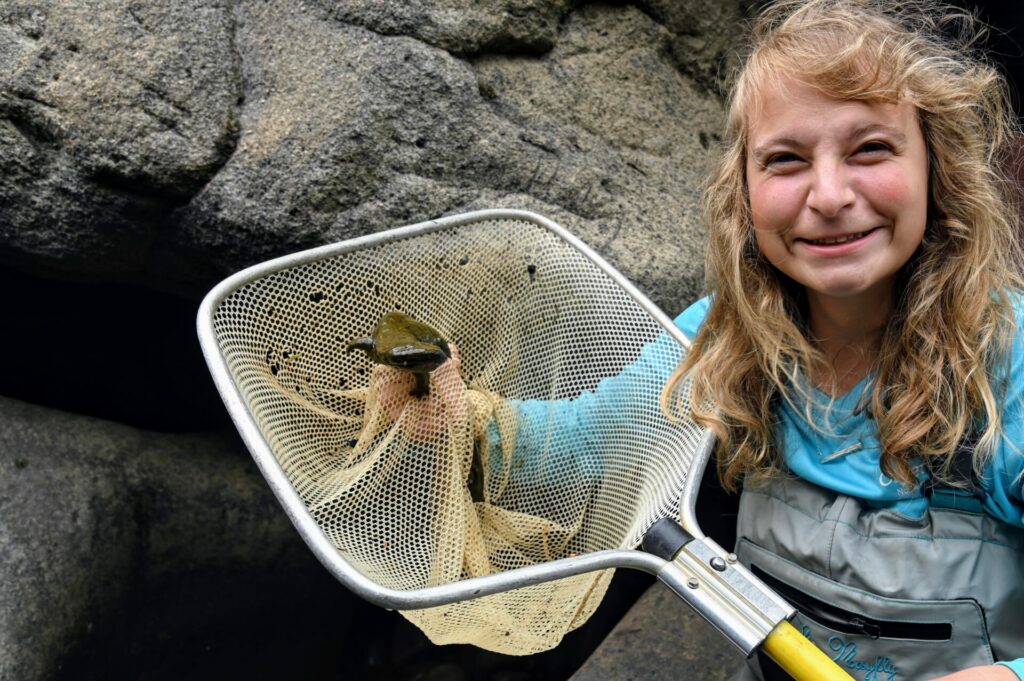
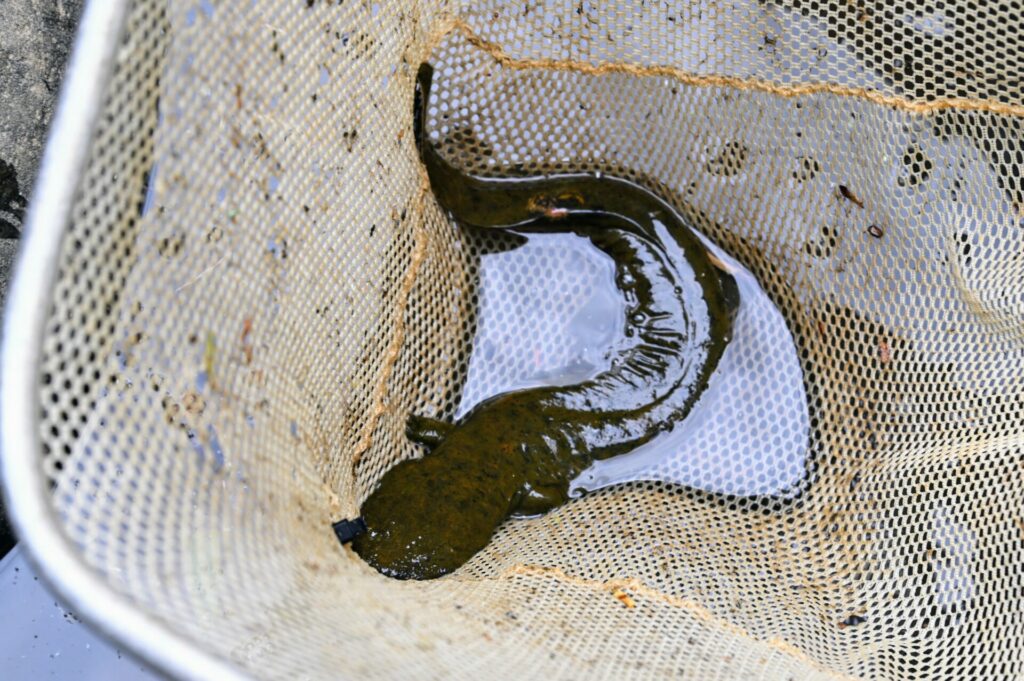
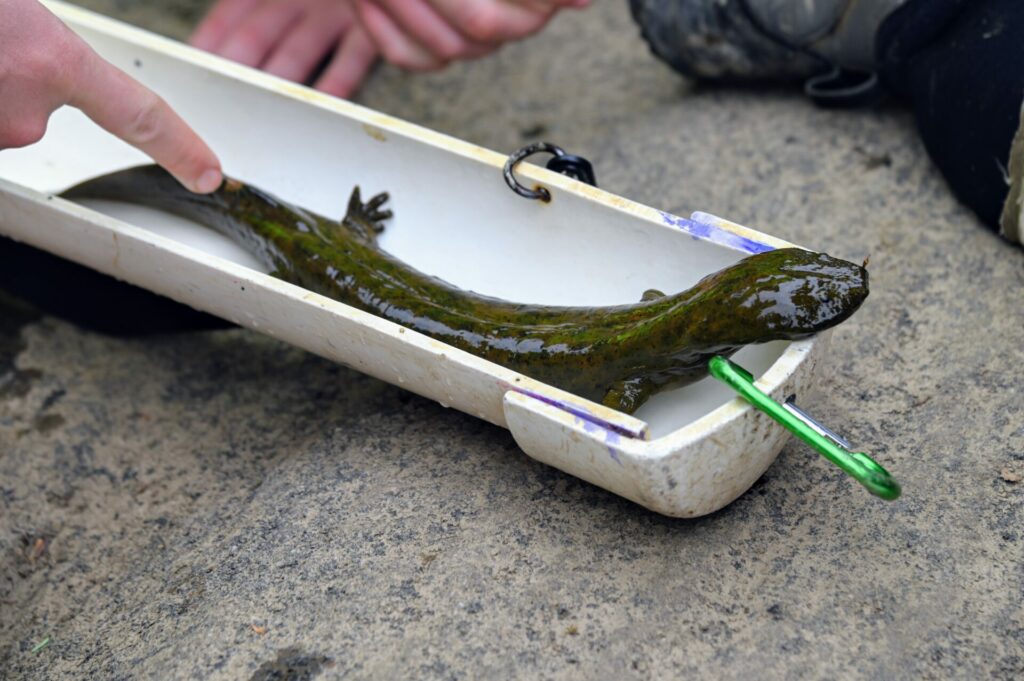

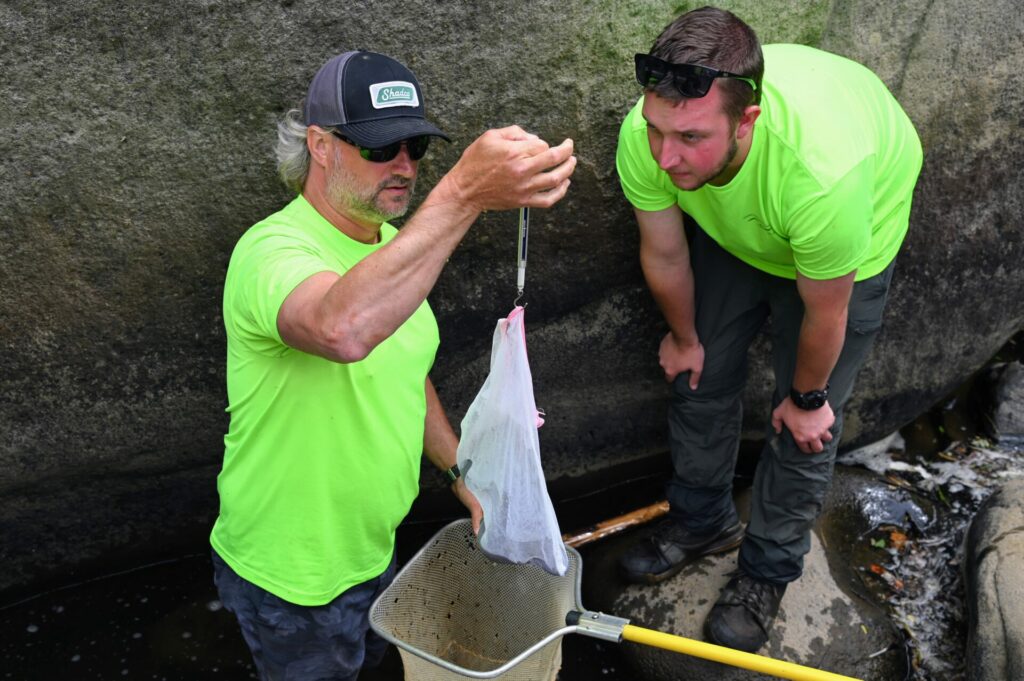
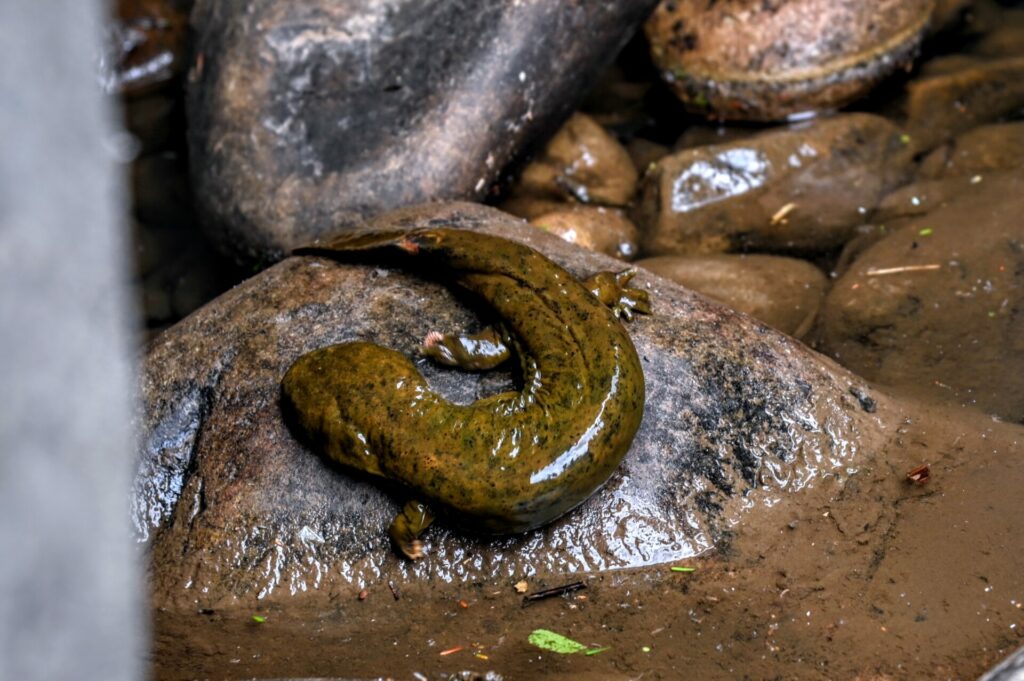
After many hours of searching (and some helpful local beta), our Americorps member Sarah finally spotted one among a stack of large boulders in the Yough. The researchers collected data from the animal, gave it a microchip, and released it back into its habitat.
Day 3 – Indian Creek and Rasler Run
Our final location was Indian Creek, which the group accessed using the Indian Creek Valley Trail. They traveled into the Indian Creek Gorge and searched for hellbenders along Rasler Run. This property is one of MWA’s newest land acquisitions.
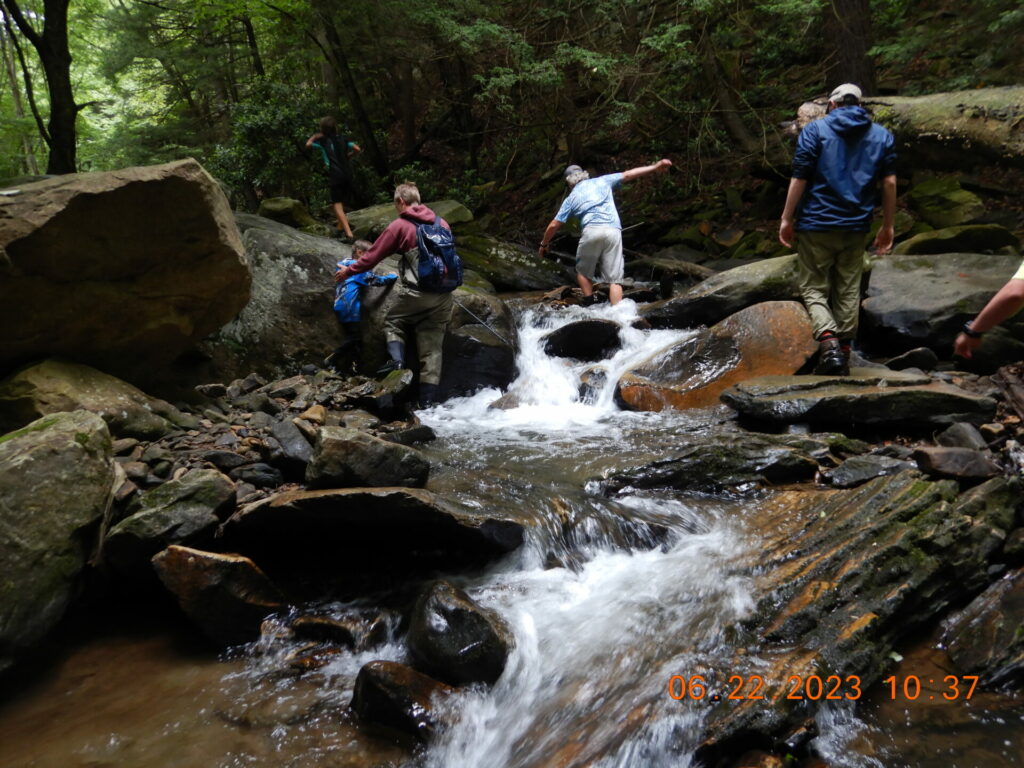
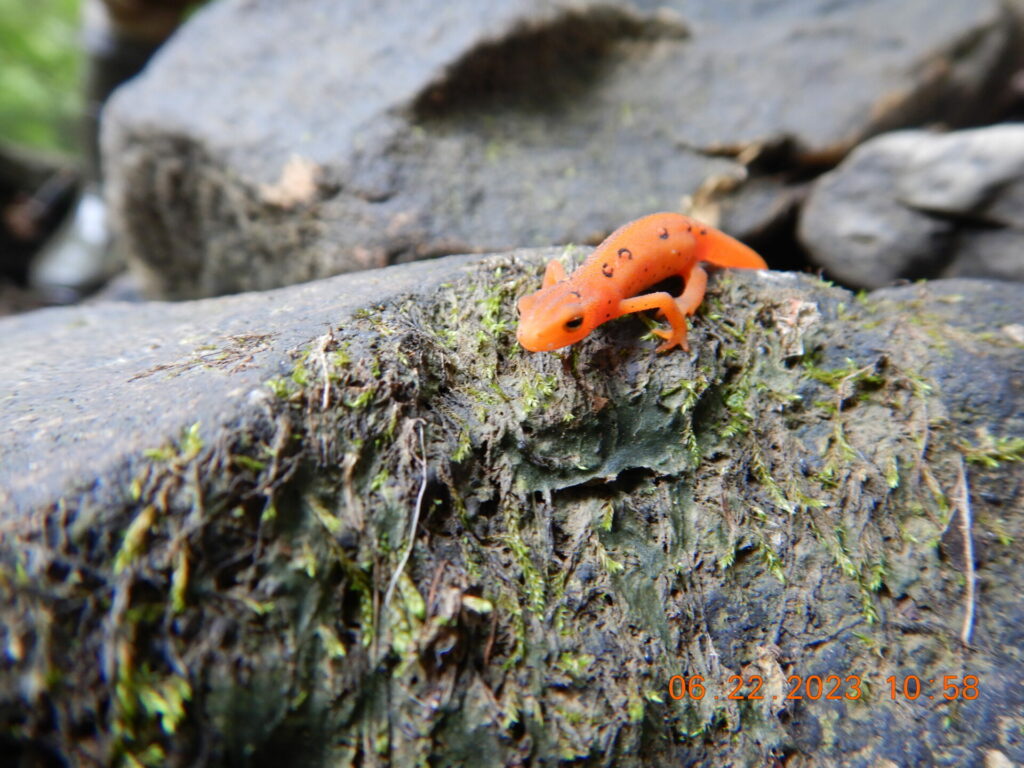
Rasler Run is a tributary to Indian Creek, and it’s currently designated as a high quality coldwater fishery and Class A Wild Trout Stream. The Western Pennsylvania Conservancy designated 12.8% of the property as a Natural Heritage Area for its exceptional ecological diversity. Conveniently, Rasler is directly across from the Indian Creek Valley Trail! Our group wanted to survey this stream to further prove its ecological value.
While they didn’t manage to find hellbenders in Rasler Run, the crew still thoroughly enjoyed hiking up this gorgeous freshwater stream.
Their second location for the last day of the survey was Indian Creek, near the Steyer Bridge. Although there was some potential habitat, the huge salamanders stayed hidden in that section of the watershed for now.
The future of hellbender sampling in the Yough
As we continue to oversee the health of the Youghiogheny River and its surrounding watershed, MWA looks forward to using different biological surveying methods to monitor our precious aquatic life.
Note to anglers: If you find an unfortunate hellbender on the end of your line, please cut the line and let it go! Hellbenders are very important species in our ecosystem!
MWA received an official permit to conduct this type of research in our watershed, and the survey was managed by professionals. Please don’t flip rocks in the river, as that may destroy sensitive aquatic habitat!
Hellbender Surveys in the Indian Creek and Youghiogheny River Watersheds were financed in part by a grant from the Community Conservation Partnership Program Environmental Stewardship Fund under the administration of the Pennsylvania Department of Conservation and Natural Resources, Bureau of Recreation and Conservation administered through the Pennsylvania Environmental Council’s Laurel Highlands Mini Grant Program.

